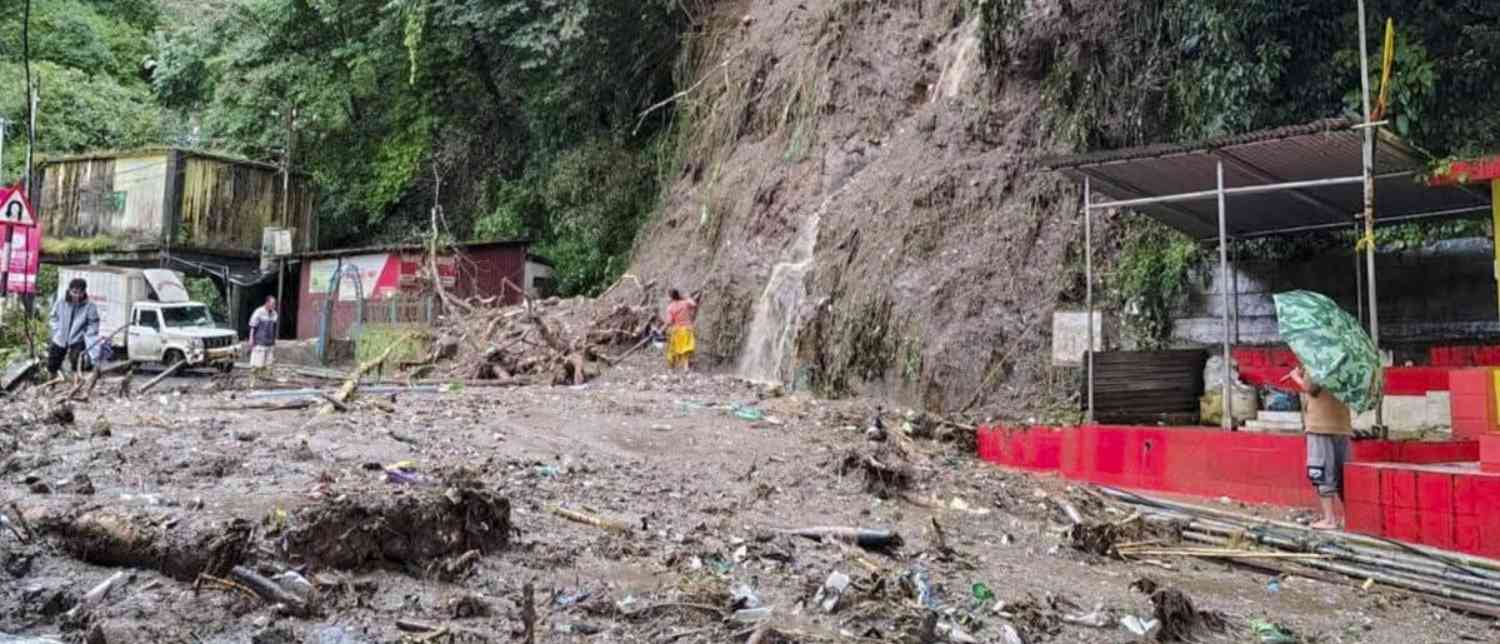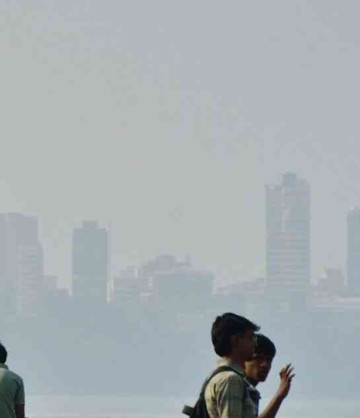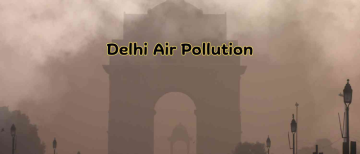The death toll in the catastrophic landslides that struck the Darjeeling district in West Bengal has climbed to 24, while hundreds remain stranded in remote hill zones, and dozens are still missing, officials confirmed on Monday as rescue operations continued amid relentless rainfall.
North Bengal Development Minister Udayan Guha said that the additional casualty was confirmed after the recovery of one more body late Sunday night. “The situation remains extremely challenging. Several people are still missing, and the toll is likely to go up. Continuous rainfall is hampering the rescue operations,” he told PTI.
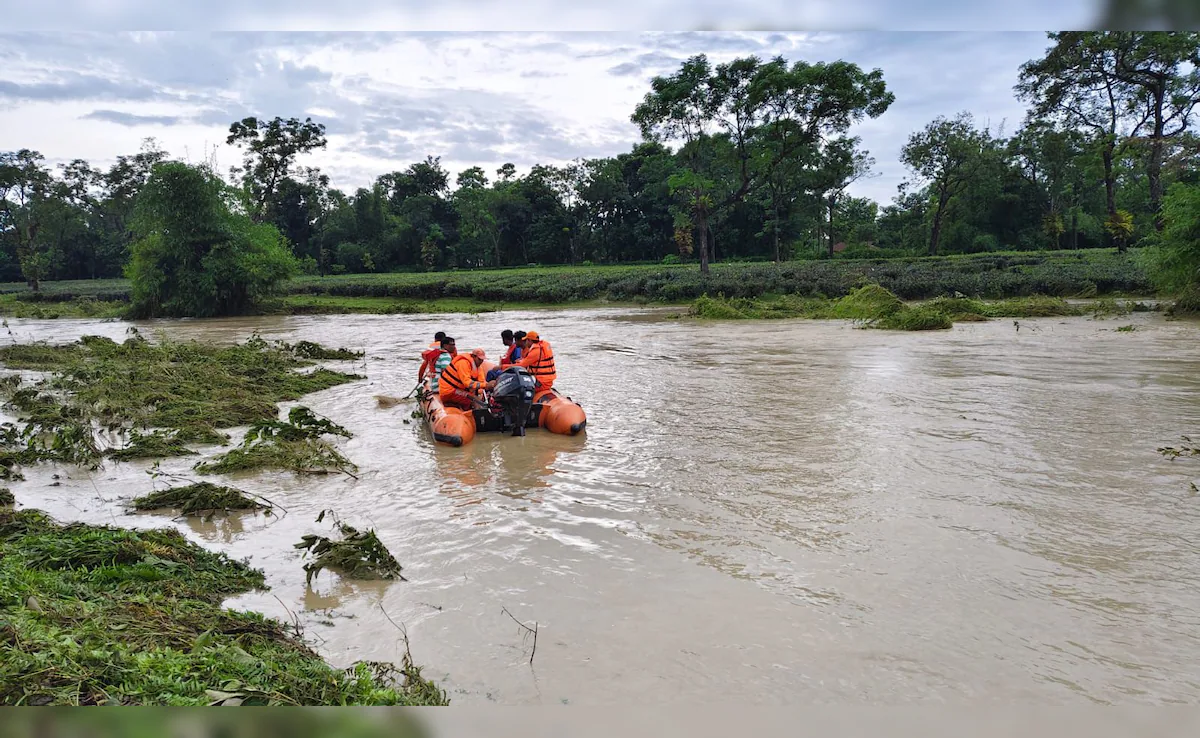
Governor Cuts Short Tour, Heads to Darjeeling
West Bengal Governor C. V. Ananda Bose cut short his visit to Tamil Nadu and Kerala to rush to the disaster zone. A Raj Bhavan official said Bose would oversee rescue operations personally and speak with affected residents. “Governor Bose has flown back from Tirupati this morning and is heading towards Darjeeling. He will be visiting the landslide-affected areas in Mirik and supervising the rescue and rehabilitation efforts,” the official told PTI.
In addition, the governor is coordinating with the National Disaster Management Authority (NDMA) and receiving regular updates on the evolving situation in Darjeeling. That same official stated, “Bose will also submit a report in the evening with specific recommendations to the competent authorities.”
The Rainfall, Damage & Impact
The landslides were triggered by an extreme deluge — over 300 mm of rainfall in just 12 hours pounded the Darjeeling hills and Dooars foothills, officials asserted. Among the worst-impacted zones are Mirik, Sukhiapokhri, Jorebunglow in Darjeeling, and Nagrakata in the Jalpaiguri district.
One direct casualty of the rain was the collapse of the Dudhia Iron Bridge, which gave way under the growing torrents. Repair operations are underway even as rescue efforts continue across multiple affected sites.
The National Disaster Response Force (NDRF) is leading the search across landslide zones, deploying heavy earth-moving machinery to locate people trapped beneath debris. “Clearing operations are underway at more than 40 landslide points. Our teams are working around the clock to reopen the Mirik-Darjeeling and Sukhiapokhri roads,” an official confirmed.
Meanwhile, Chief Minister Mamata Banerjee is scheduled to visit the disaster-struck districts later in the day, as local and state authorities mobilize relief efforts.
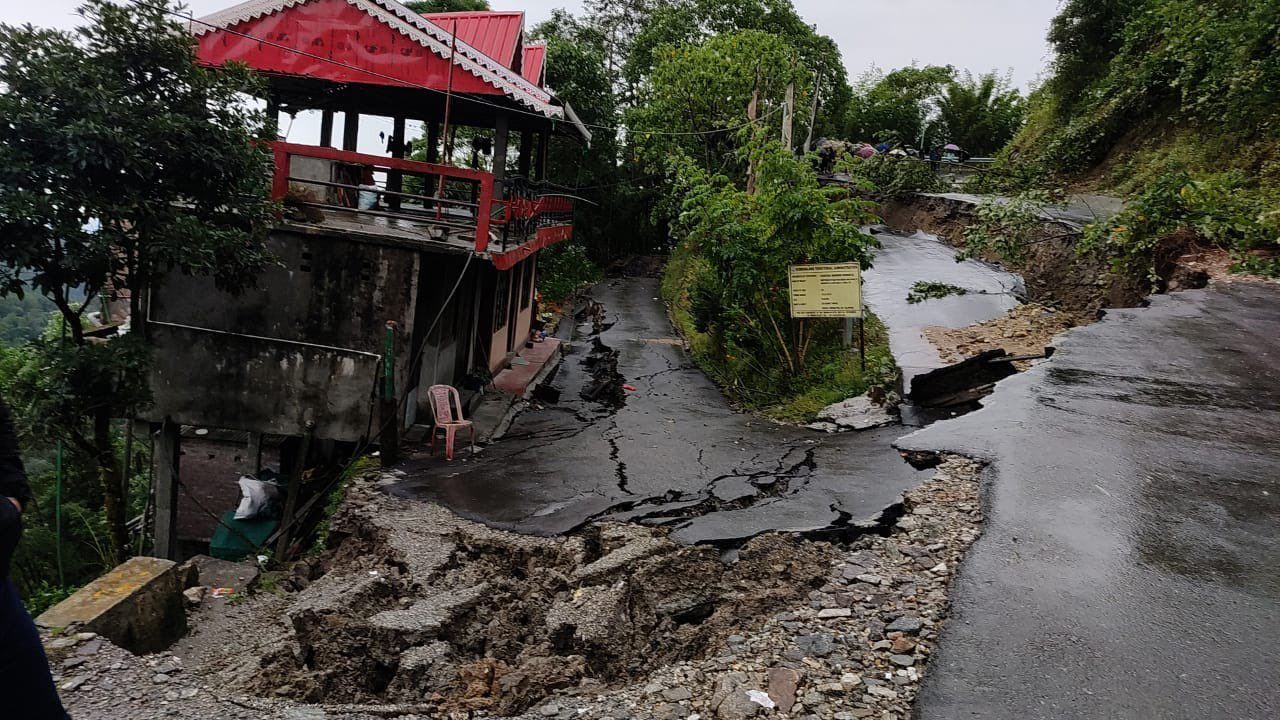
Relief Camps, Road Severance & Helicopter Rescues
The district administration, in coordination with the Gorkhaland Territorial Administration (GTA) and local NGOs, has established multiple relief camps. “Food, blankets, medicines, and drinking water are being provided to all displaced families,” officials said.
However, road connectivity to many hillside hamlets remained severed even 24 hours after the initial calamity. A GTA official reported: “Entire slopes have caved in, bridges washed away, and large portions of roads are buried under mud. Helicopter sorties may be needed to reach some interior villages.”
Tourists visiting the region for the Durga Puja holidays now find themselves trapped. The major arterial roads linking to Siliguri at the plains are blocked. “Efforts are being made to help them reach Siliguri in batches via alternative routes,” an official added.
Forecasts suggest more extremely heavy rainfall may persist until Tuesday morning, with alerts issued for Darjeeling, Kalimpong, Jalpaiguri, and Cooch Behar districts, an Indian Meteorological Department (IMD) official said. “Given the saturated soil and ongoing rain, the risk of fresh landslides remains high,” he warned.
Political Reactions & Blame
From the opposition, BJP MP Raju Bista representing Darjeeling remarked, “What happened in Darjeeling, Nagar Katta, Kalchini was unfortunate. This is a natural disaster… The public of West Bengal is suffering because of CM Mamata Banerjee.”
North Bengal Floods Claim Wildlife; Elephant Calf Rescued
Parallel to the human tragedy, the floods sweeping North Bengal have claimed the lives of numerous wild animals. A senior Indian Forest Service (IFS) officer reported Monday that carcasses of a female rhino, a leopard, two bison, and four sambar deer had been recovered. He added many remote areas remain inaccessible, and “efforts are on to check whether any other animals have died.”
In a heart-wrenching but hopeful moment, a one-month-old elephant calf washed away in Nepal’s Mechi River was rescued in India. Though it was separated from its herd in Nepal, the rescue teams are striving to reunite it. As the IFS officer clarified, “Even though it got washed away when the elephant herd was crossing the river in Nepal, the calf was rescued in India. All efforts are being made to reunite the baby with the herd. The herd is now in India.”
The heavy rains have inundated large tracts of Alipurduar and Jalpaiguri, making wide areas unreachable, he added: “Our teams are still searching whether any more animals have died. But many areas still remain inaccessible which is hampering the operations.”
The IMD has issued an alert for extremely heavy rainfall across sub-Himalayan West Bengal, especially in Darjeeling and Kalimpong. The situation remains volatile.
Heartfelt condolences on the tragic loss of precious lives in #DarjeelingLandslide 💔
Praying for the safety of all the people of affected areas of West Bengal #WestBengal #GretaThunberg#WestBengalrains #Kolkata#HumanityLovesMUHAMMAD#iLoveMuhammadpic.twitter.com/9R6cRCwRMA— Mohd Abdul Sattar (@SattarFarooqui) October 5, 2025
Tourists Stranded, Infrastructure Crippled, Rescue Under Way
What began as a joyous hill-station holiday turned into an ordeal for hundreds of tourists across North Bengal. Flash floods and landslides cut off road links, left roads strewn with debris, and submerged key areas in Darjeeling, Kalimpong, Kurseong and the Dooars region. By Sunday morning, these scenic destinations had been isolated from the plains.
The downpour over 24 hours was staggering: Darjeeling recorded 261 mm, Cooch Behar 192 mm, and Jalpaiguri 172 mm. The deluge triggered multiple landslides, damaging vital arteries such as Subash Ghisingh Marg (Siliguri–Kurseong) and NH10, the key highway connecting Sikkim and Kalimpong. Portions of NH110, which links Darjeeling to Siliguri, were partially restored by afternoon, and limited traffic resumed on NH10 after debris clearance.
In the Dooars, swollen rivers isolated eco-resorts and wildlife lodges. At Madarihat Tourist Lodge, just outside Jaldapara National Park, a wooden bridge over the Holong stream collapsed, stranding guests. Forest staff resorted to using elephants for evacuation, while both vehicle and elephant safaris in the park have now been suspended indefinitely.
The magnitude of devastation is sobering. Over ten deaths were recorded in Mirik, one of the worst-hit areas in the Darjeeling hill region, and many more remain missing. Rescue teams are struggling to reach far-flung hillside settlements. Meanwhile, the Wangchu River (called Raidak in Bengal) in neighboring Bhutan is flowing above danger levels, stirring fears of downstream flooding.
Chief Minister Mamata Banerjee issued a plea for calm, urging tourists not to risk moving until safe evacuation was arranged. “We are advising tourists in north Bengal to stay where they are until our police teams can evacuate them safely. The cost of rescue will be borne by us — tourists need not worry,” she posted on X (formerly Twitter). The state government also announced additional North Bengal State Transport Corporation (NBSTC) buses from Siliguri to Kolkata for returning travelers.
Prime Minister Narendra Modi expressed concern in a post on X, stating, “We are committed to providing all possible assistance to those affected.”
The Gorkhaland Territorial Administration (GTA) ordered the closure of popular attractions like Tiger Hill and Rock Garden, and local police urged travellers to consult official advisories. As Darjeeling SP Praween Prakash explained:
“We will continue updating our social media handles with the latest information. We advise all tourists to stay where they are. Once the Rohini road is cleared, movement will be possible, as heavy rainfall has blocked the roads. Those planning to visit Darjeeling should postpone their trip, but urgent travelers may be allowed via an alternative route. We aim to normalise the roads soon. Locals and hoteliers are requested to guide tourists and advise them to wait for 3–4 hours.”
The tourism sector — which had been recovering since late September — now fears yet another major setback.
To bolster rescue capacity, Army and NDRF teams joined state personnel by Sunday afternoon, and several helplines were activated in Siliguri, Darjeeling, and Kolkata for those stranded. But with bridges down, roads washed out, and communications disrupted, authorities appealed for patience and cooperation as they strive to restore normalcy.
Why This Disaster Is No Longer Merely “Natural” — 5 Core Drivers
While the immediate cause was intense rainfall and collapsing slopes, experts argue the Darjeeling landslide catastrophe stems from deeper, avoidable causes. According to The Indian Express and multiple studies, the event fits a predictable pattern informed by human stressors. Here are five contributing factors that transform this from a mere natural disaster to a predictable human crisis:
-
Population surge and land speculation
Over the last 30 years, an influx of people and a land/property buying spree have pushed settlements into fragile zones.
-
Altered climate and rainfall behavior
Traditional, gentle monsoon showers (locally called sawnaay jhari) have given way to powerful, short-burst downpours (mushaldhare varsha) that the saturated Himalayan soils simply can’t handle.
-
Rivers changing course unpredictably
Streams and watercourses are migrating, often encroaching on human settlements. This unpredictability intensifies risk.
-
Heavy, ill-planned development
Infrastructure projects — hydroelectric plants, large hotels, roads — have been imposed without regard for the hills’ limited carrying capacity.
-
Unchecked construction along watercourses
Building along riverbeds and streams blocks natural drainage (“arterial clogging”), amplifying flood and landslide risk.
दार्जिलिंग में भारी बारिश और भूस्खलन से जान- माल का भारी नुकसान हुआ है। सभी प्रभावित लोगों के प्रति संवेदनाएं 🙏🙏🙏
महादेव कृपा बनाए रखें।#DarjeelingLandslidepic.twitter.com/pjoGo3nT11— Dhruv 🌟 (@Dhruv_Axom) October 6, 2025
Was a Disaster Like This Predicted?
The direct answer: Yes. Institutions, researchers, and NGOs had long warned of Darjeeling’s vulnerability. The Landslide Atlas of India 2023, published by ISRO, ranks Darjeeling as the 35th most landslide-exposed district in the country.
Local NGOs like Save the Hills have persistently flagged these dangers via public campaigns and social media. The 2023 Glacial Lake Outburst Flood (GLOF) in Sikkim also serves as a grim precedent: the breach of Lhonak Lake was foreseen in the Sikkim Human Development Report 2001, and when it happened, it destroyed a major hydro project, inflicting losses equivalent to nearly 60% of Sikkim’s GDP — with downstream consequences felt even in Darjeeling.
What Must Be Done?
Despite repeated warnings, the reaction has been insufficient. According to The Indian Express, both central and state authorities have shown a critical lack of urgency — particularly in issuing warnings and executing disaster management.
Local bodies like the Gorkhaland Territorial Administration are hamstrung by constrained finances, limited technical capacity, and weak institutional structures. Hill municipalities, once models of governance, now lack even basic solid waste management, which in itself aggravates disaster risk.
The institutional failure is glaring in places like Teesta Bazar, where even after successive floods from the GLOF, floodwaters continue to block highways weekly — and yet, the damage remains unaddressed.
Stakes Are High — Way Beyond Local Impact
Darjeeling’s strategic location — near India’s “chicken’s neck” corridor — gives disasters here a national security dimension. Meanwhile, the region’s famed tea, tourism, and educational institutions are being progressively undermined by the climate crisis.
Experts persist in demanding a dedicated climate and disaster management institution for the Eastern Himalayas. A longstanding proposal to convert the Forest Rangers College in Kurseong into a regional climate change hub reportedly remains unheeded by the Ministry of Environment, Forest and Climate Change in Delhi.
In the eyes of many analysts, Darjeeling’s development planning must now be viewed through the prism of national security and regional climate resilience — because the risks here are no longer isolated natural events, but predictable outcomes of human mismanagement in a fragile landscape.
With inputs from agencies
Image Source: Multiple agencies
© Copyright 2025. All Rights Reserved. Powered by Vygr Media.

